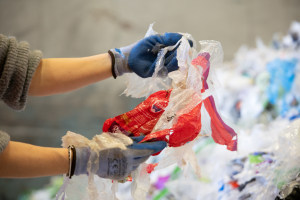Using export-certified contract blenders can help dairy companies access lucrative Asian markets, writes Christine Envall of Prestige Blending.
There remains incredibly strong demand in Asia for Australian blended foods, particularly dairy products. Australian food manufacturers are regarded as safe, high quality, and reliable.
With rising middle classes in China, the market has boomed, and there’s interest in Taiwan, Hong Kong, Singapore, and India as well.
Some of the products doing well include milk powders, whey powders, premixed flavoured nutritional drink powders, infant formulas, and more.
Various forms of milk powder, as opposed to fresh dairy, are the main source of opportunity. In fact, they account for 40 per cent or more of dairy exports to some countries, the largest proportion by far.
So the opportunity for Australian food companies is rich, but until now the barriers to entering these markets have been huge.
First, there are Australian certifications that are needed. You need more than safe food certifications and HACCP certifications if you’re wanting to head overseas.
There’s DAFF registration through the Department of Agriculture, Forestries and Fisheries, as an export-registered establishment.
It can also pay to obtain FDA registration with the US, and to secure product-specific Halal certification.
Second, there are destination-country registrations. For instance, to export into China you need a CNCA registration. And the Chinese government only uploads approvals once or twice a year, and only a couple of approvals get through – so the waiting list is long.
Third, there’s accessing distributors or agents and building the contacts that enable test, trial and trust. Agents will represent a product but not take ownership of goods. And while a distributor will buy and take ownership, the variation in terms, profitability and how strongly they promote your product can make it troublesome and hard to navigate.
And lastly, there’s reputation or precedent. If you have no prior precedent in the market as a supplier or brand, there’s an extra level of impediment until you are.
How contractors can help
The way around these obstacles is to engage a contract blender, and for those in the contract blending game to get flexible to help other food companies export.
Contract blending isn’t new, but strategically working with a contract blender to help you grow and access new markets seems like a concept that’s way overdue.
There are two things Australian food companies need from suitable contract blenders – the right certifications, and flexibility of service. Any food company large or small should be able to access new markets.
As contract blenders exporting to Asia, I know first-hand how difficult it is to get DAFF export registration. It’s the contract blender who should worry about it, not the client. Then there’s the destination country approvals. Food companies need those, but they can be helped to get them.
Flexibility is the other major criteria. First of all, the minimums need to be small. If they’re too large, the investment required can exclude you or require too large a risk.
Further to that, the flexibility has to be there for your contract blender to ramp up quantities quickly. A good contract blender can add extra hours, extra shifts, and extra capacity if it’s needed. Because when the opportunity comes, a food company using them wants to seize it.
In addition, the terms should be flexible enough to allow a company to embrace a small trial and limited transactions, and test a scope of services.
Flexibility in stages
The last consideration is what services the contract blender can offer and how open to ‘cherry-picking’ they are. You should have flexibility to utilise whatever services you can’t supply yourself.
Broadly, the different stages are these – concept, formulation, ingredient sourcing, premixes, blending, packaging and labelling, storage and distribution, and export.
Let’s place concept, placement and packaging together for argument’s sake. You should be able to get advice on the concept before you start. If there’s something missing in product-market fit, you need to know early. And you should be able to get advice on food compliance.
You should then be able to get advice on market placement and packaging. And once these are sorted, you can look at formulation, flavour and nutrition.
Some food companies might have their own formulas – that’s easy. But some might not, so advice on nutritional objectives and flavourings can help them arrive at a formula.
A good contract blender can also source all necessary ingredients and produce premixes, or allow the food company to deliver them ready. The blending should allow small, medium or large quantities.
For packing and labelling, a good contract blender can create a finished and export-ready product. And then they might even be able to store, pick and pack, and distribute the product.
Of course, a contract blender can also help a smaller or new-to-export food company secure distributors.
With Asian markets so close and growing so fast, more Australian companies should be taking advantage of strategic alliances with contract blenders already armed with certifications, flexibility of terms, and the freedom to grow with the food company’s success.






